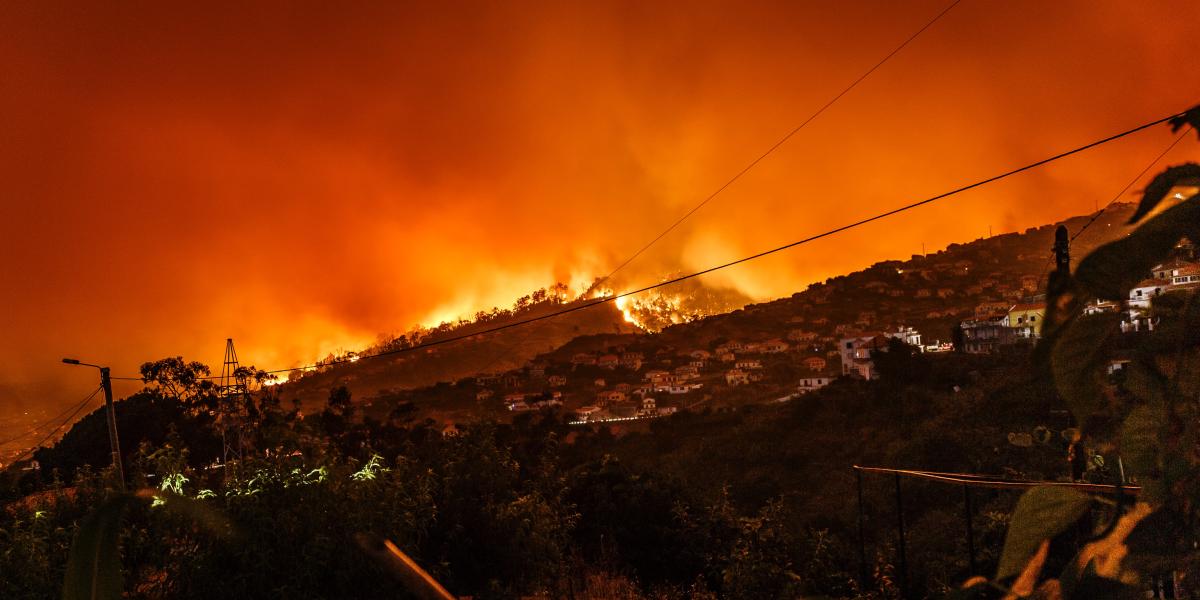
Record-setting temperatures this summer make it clear that the effects of climate change are upon us, and underscore the need for some amount of adaptation in the future to reduce its adverse impacts. However, adaptation will be easier for some groups of people than others. Access to economic resources, technology, and information will determine the success of different groups in confronting the challenges posed by climate change. In a new paper published in the Journal of Politics, I explore with co-authors Sarah Anderson and Matthew Wibbenmeyer how a group’s socioeconomic status affects their ability to influence government spending on local projects that reduce risk from wildfire. Our study examines communities on the front lines of climate change – residents of the wildland-urban interface (WUI) in the western U.S.
Wildfire damages in the United States have increased substantially in the past decade, due in part to climate change. The main strategies for limiting wildfire damages are suppression and fuels treatments. In the latter case, fire severity–and the likelihood of losses–is reduced by removing fuels from the landscape through forest thinning and prescribed fire. In the western U.S. federal agencies manage the majority of wildlands and spend about $6 billion each year controlling wildfires, $0.6 billion of which is allocated to fuels management projects.
Decisions by federal agencies about where and when to conduct fuels management are based on scientific principles, although agencies also have statutory requirements to incorporate public input. This means that groups who are better equipped to lobby government agencies–what political scientists refer to as “political efficacy”–may be more successful in getting fuels management projects located close to their community. Political efficacy has been shown to be positively correlated with socioeconomic status, measured by income, education, race, and ethnicity.
Our study leverages salient wildfires1, which raise local demand by WUI residents for fuels management projects on adjacent federal lands, to test for inequality in agency decision-making. Specifically, we examined whether fuels treatments were more likely to be located close to WUI communities that had experienced a nearby wildfire and whether the socioeconomic status of the community mediated the agency’s response. To do so, we assembled ten years of data on fuels management projects on federal lands managed by the U.S. Forest Service, the Bureau of Land Management, and the National Park Service. We also identified WUI communities located next to these federal lands as well as large wildfires that occurred near to these communities.
We found evidence that agency decision-making can contribute to inequality. A wildfire occurring near a WUI community makes it 1.6 percentage points more likely that a fuels treatment will be located on nearby federal land, consistent with the idea that salient wildfires increase demand by communities for risk-reducing government projects. If a community is richer–measured as a one standard deviation increase in the percentage of the population above the poverty line–then this effect is magnified by an additional 4.4 percentage points. And if the community is more educated–a one standard deviation increase in the percentage of the population with at least a college degree–the effect is a 3.1 percentage point increase. These changes represent large departures from the average rate of fuels treatments near WUI communities. Overall, we find that forest managers are more likely to implement fuels projects near communities that have recently experienced a fire when those communities have a higher percentage of high-income, highly educated, and white residents.2
We had the rare opportunity to put these research results to work. We circulated an early version of our paper just before the Biden Administration issued Executive Order 14008 directing Federal agencies to address current and historic environmental injustice. Our research was featured in a New York Times article that attracted the attention of the U.S. Forest Service, who wanted to learn more about our results. In early 2021, we gave presentations to several groups within the agency responsible for their fuels management program. Overall, the Forest Service employees we met with were receptive to our findings and eager to address inequities in the implementation of their programs.
_______________
1 Salient events are prominent or stand out conspicuously. Psychologists and behavioral economists have found that people's attention is drawn to salient features of a decision problem, leading them to overweight prominent information in subsequent judgments.
2 Our empirical design lets us rule out the possibility that agencies are simply choosing to protect high-valued properties, which are more likely to be owned by individuals with high socioeconomic status.



